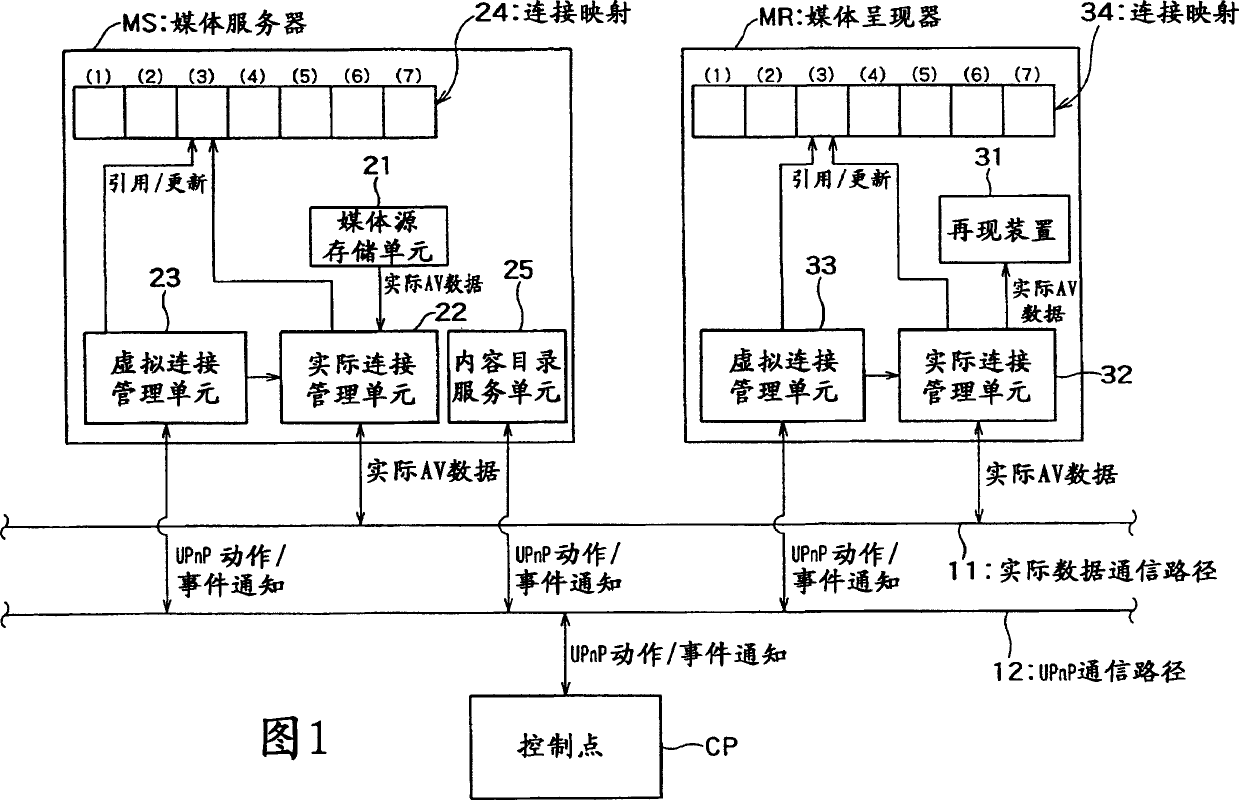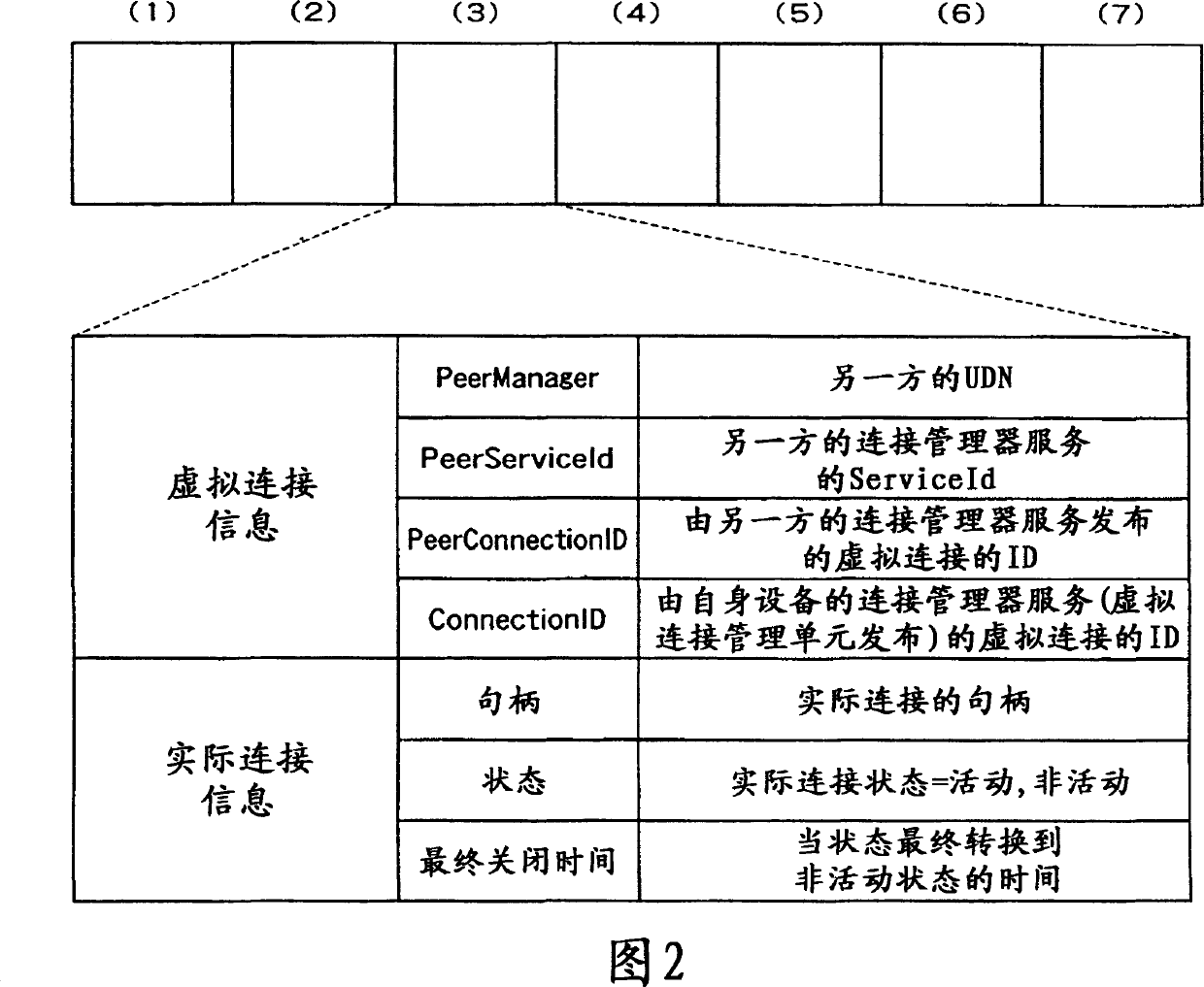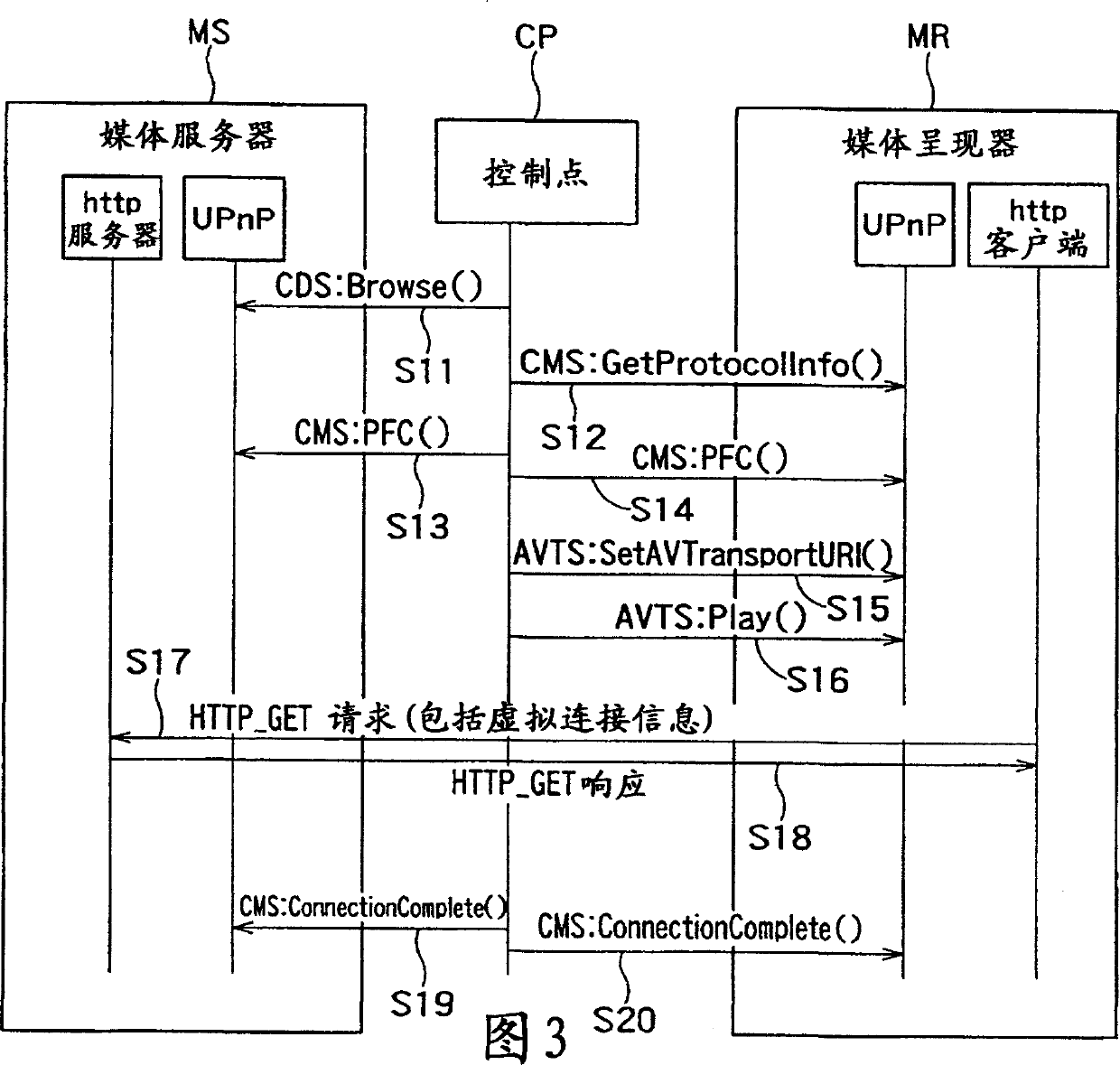Data transmission system, data transmission method, and media apparatus
A technology of data transmission system and media equipment, applied in the direction of transmission system, electrical components, etc., can solve problems such as virtual connection and actual connection connection that are not mentioned
- Summary
- Abstract
- Description
- Claims
- Application Information
AI Technical Summary
Problems solved by technology
Method used
Image
Examples
Embodiment Construction
[0029]FIG. 1 is a block diagram showing an example of a transmission system according to the present invention. The media server MS, media renderer MR and control point CP are connected to each other through a network such as a home network. The media server MS, media renderer MR, and control point CP can execute programs according to the UPnP AV protocol. The UPnP AV protocol and specifications related to the UPnP AV protocol are found in e.g. "http: / / www.upnp.org / standardizeddcps / mediaserver.asp" "UPnP AVArchiteture v0.83, June 12, 2002", "Connection Managerv1.0, June 25 , 2002", "Designing a UPnP AV Media Renderer V1.0, Intel Corporation, 2003 (http: / / www.intel.com / technology / upnp / download / Designing_a_UPnP_AV_MediaRenderer_v1_0-XF.pdf)", "Designing a UPnP AV Media Server V1.0, Intel Corporation, 2003 (http: / / www.intel.com / technology / upnp / download / Designing_a_UPnP_AV_Mediaserver_v1_0-XF.pdf)" is described.
[0030] In FIG. 1, the media server MS is, for example, a DVD play...
PUM
 Login to View More
Login to View More Abstract
Description
Claims
Application Information
 Login to View More
Login to View More - R&D
- Intellectual Property
- Life Sciences
- Materials
- Tech Scout
- Unparalleled Data Quality
- Higher Quality Content
- 60% Fewer Hallucinations
Browse by: Latest US Patents, China's latest patents, Technical Efficacy Thesaurus, Application Domain, Technology Topic, Popular Technical Reports.
© 2025 PatSnap. All rights reserved.Legal|Privacy policy|Modern Slavery Act Transparency Statement|Sitemap|About US| Contact US: help@patsnap.com



